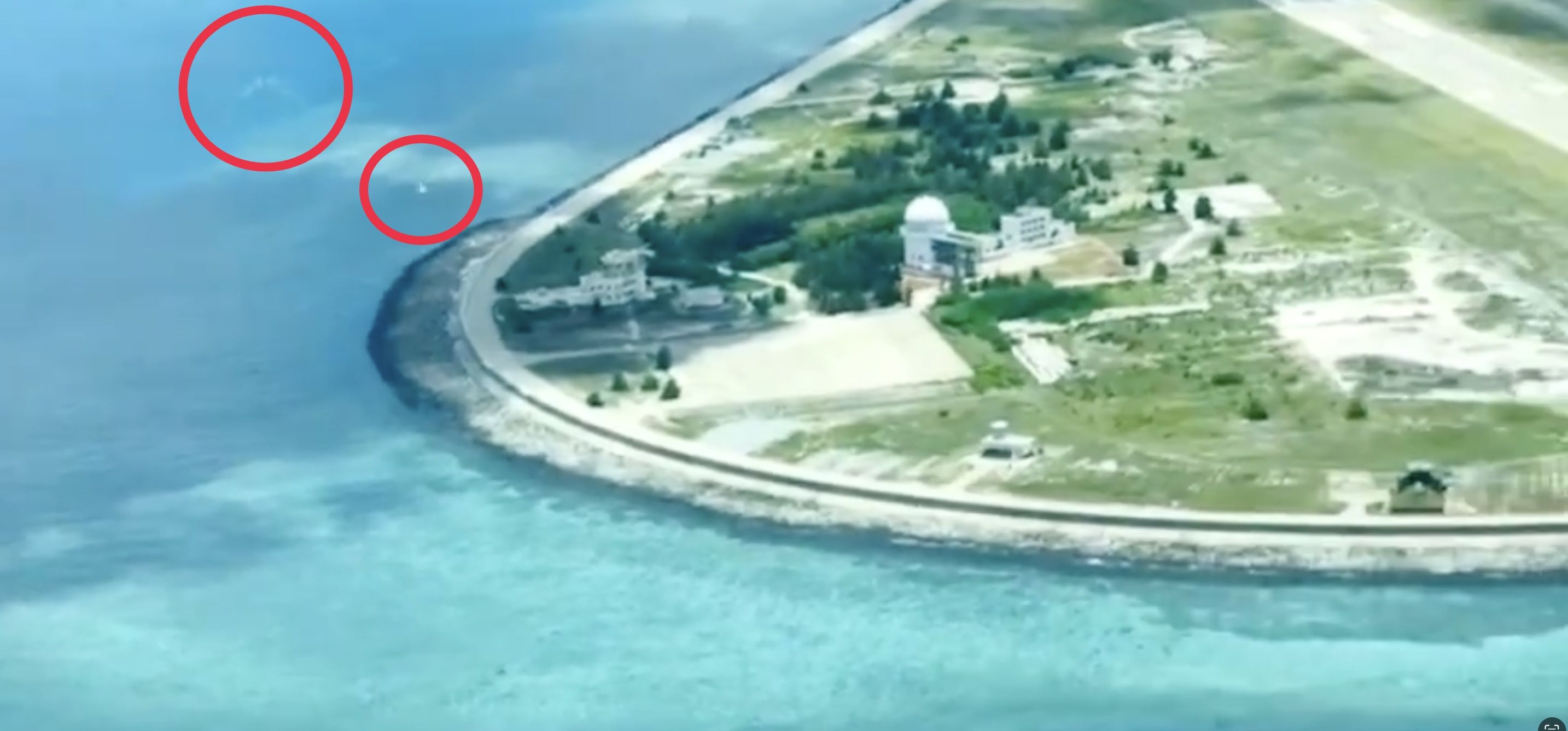PH tells China: Stop WPS provocation, end 'unjustifiable' use of flares

What Department of National Defense (DND) Sec. Gilberto Teodoro Jr. considers as a nightmare has come true: the People’s Republic of China (PRC) is taking the battle for the West Philippine Sea (WPS) into the sky.
And for the third time in two weeks, China launched flares anew against a Philippine aircraft, this time involving a Bureau of Fisheries and Aquatic Resources (BFAR) plane.
The National Task Force for the West Philippine Sea (NTF-WPS) called on China to stop its provocative actions in the WPS as it accused the latter of launching flares against a Cessna 208B Grand Caravan aircraft by the BFAR while it was conducting a maritime domain awareness (MDA) flight within the territorial sea of Pag-asa (Thitu) Island on Aug. 22.
The NTF-WPS said that the BFAR aircraft was only patrolling the area, in coordination with the Philippine Coast Guard (PCG), to intercept poachers encroaching upon the country’s exclusive economic zone (EEZ) and the territorial seas of the features constituting the Kalayaan Island Group (Spratly Islands) when China “unjustifiably deployed flares” from Zamora Reef, an artificial island that was militarized by Beijing.
Zamora Reef is a low-tide elevation located in the Kalayaan Island Group, and is approximately 12 nautical miles from Pag-asa Island. It was seized by China in 1988 through reclamation activities, establishment of military facilities, and deployment of soldiers, according to the Philippine Navy.
“We firmly reiterate our call on the government of the People's Republic of China to immediately cease all provocative and dangerous actions that threaten the safety of Philippine vessels and aircraft engaged in legitimate and regular activities within Philippine territory and Exclusive Economic Zone (EEZ) and the right of all vessels and aircraft exercising freedom of navigation and overflight in the South China Sea,” the NTF-WPS said in a statement on Saturday, Aug. 24.
“Such actions undermine regional peace and security, and further erode the image of the PRC with the international community,” it added.
The use of flare poses a flight hazard as they can cause damage to the engine and propeller of the aircraft, similar to kites and birds.
"Given that the BFAR aicraft is a turbine-propeller type, the flares could potentially be ingested by the engine, leading to engine failure and a possible crash landing," the NTF-WPS explained.
However, China justified its actions as it said that the BFAR plane intruded into the territorial airspace of Subi Reef.
China claims almost the entire South China Sea (SCS), including some features within the Philippines' exclusive economic zone (EEZ).
A 2016 arbitral ruling invalidated China's dash-line claims in the SCS in favor of the Philippines' protest, but Beijing continues to ignore the landmark decision.
‘Pattern’
Teodoro has foreseen that the aerial intimidation by China against Philippine aircraft will be the new “pattern” in the WPS.
It began on Aug. 8 when two China multi-role fighters (MRFs) conducted dangerous maneuvers and dropped flares against a Philippine Air Force (PAF) aircraft during a routine patrol over Bajo de Masinloc (Scarborough or Panatag Shoal).
“[W]e have to expect that this is going to be a continuous pattern that China will do against us. This is a continuous struggle for presence and for assertion of sovereign rights in the area so you will have to expect these things to happen,” Teodoro said on Aug. 12 on the sidelines of the commemoration of the 2024 International Humanitarian Law (IHL) Day and 75th Geneva Conventions anniversary in Camp Aguinaldo, Quezon City.
Rear Adm. Roy Vincent Trinidad, Philippine Navy (PN) spokesperson for WPS, said that the use of flares by China against a Philippine aircraft in the WPS “was the first time in recent memory.”
A week after that, the Cessna 208B Grand Caravan by the BFAR had been subjected to “harassment” by the People’s Liberation Army Air Force (PLAAF) during an MDA flight near Bajo de Masinloc on Aug. 19.
“The PLAAF fighter jet 63270 engaged in irresponsible and dangerous maneuvers, deploying flares multiple times at a dangerously close distance of approximately 15 meters from the BFAR Grand Caravan aircraft,” the NTF-WPS revealed.
“The Chinese fighter jet was in no way provoked, yet its actions demonstrated hazardous intent that jeopardized the safety of the personnel onboard the BFAR aircraft,” it added.
Nonetheless, the NTF-WPS said that the Philippines’ maritime and aerial patrols in the WPS will continue despite the dangerous actions by China in adherence to international laws and the 2016 arbitral ruling.
“The Philippines remains steadfast in exercising its rights to strengthen maritime domain awareness within our sovereign territory, national airspace, and EEZ, as well as in the high seas, in accordance with United Nations Convention on the Law of the Sea (UNCLOS) and the 2016 Arbitral Award,” it said.